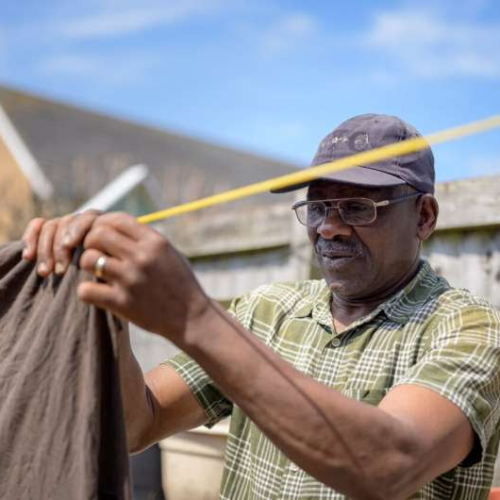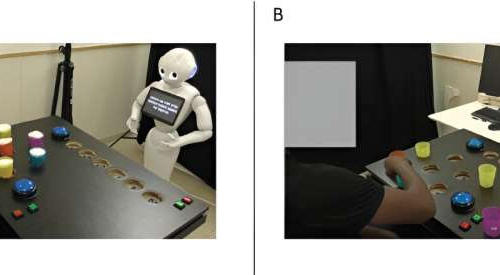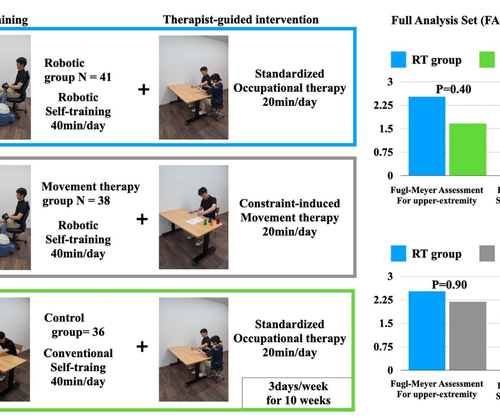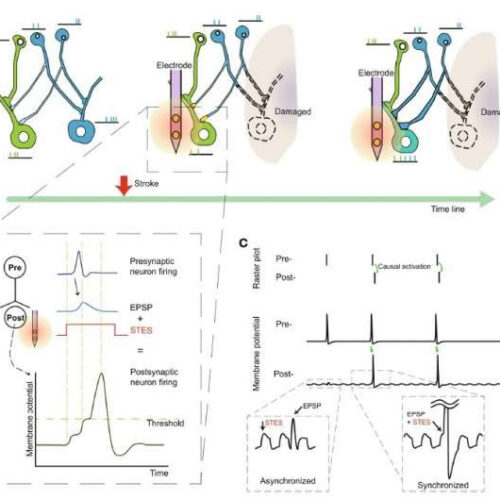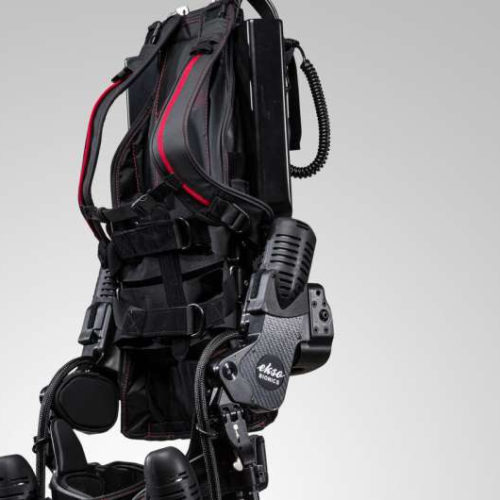JULY 23, 2024 by Amsterdam University Medical Centers Credit: Unsplash/CC0 Public DomainCommercial arm robots are increasingly deployed in order to aid stroke patients in their recovery. Around 80% of patients have problems with their arm function. Robots are also seen as a solution to financial, and staffing, shortcomings in the health care sector. However, research...
Tag: <span>stroke rehabilitation</span>
First long-term study shows use of socially assistive robot improves stroke rehabilitation
JULY 24, 2024 by Ben-Gurion University of the Negev The experimental setup. A. Participant in the ROBOT group. The social robot Pepper gives instructions and feedback to the patient, which are presented both on the robot’s tablet screen and verbally. B. Participant in the COMPUTER group. The instructions and feedback are presented both on a...
Singing found to support stroke rehabilitation
by University of Helsinki Graphical abstract. Credit: Brain Communications (2022). DOI: 10.1093/braincomms/fcac337 Approximately 40% of stroke survivors experience aphasia, a difficulty with comprehending or producing spoken or written language caused by a cerebrovascular accident. In half of these cases the language impairment still persists one year post-stroke. Aphasia has wide-ranging effects on the ability to function and...
Robotic therapy: A new effective treatment for chronic stroke rehabilitation
OSAKA METROPOLITAN UNIVERSITY IMAGE: FIG 1. EACH GROUP’S THERAPY ROUTINE IS OUTLINED (LEFT) WITH FUGL-MEYER ASSESSMENTS (RIGHT). THE FUGL-MEYER ASSESSMENT IS A STROKE-SPECIFIC PERFORMANCE-BASED IMPAIRMENT INDEX THAT RATES PATIENTS’ ABILITY TO PERFORM TASKS ON A 3-POINT SCALE, 0 INDICATES TASKS CANNOT BE PERFORMED, 1 PARTIALLY PERFORMED, 2 PERFORMED. CREDIT: TAKASHI TAKEBAYASHI , OSAKA METROPOLITAN UNIVERSITY...
Low-power electrical stimulation could aid stroke rehabilitation
by DGIST (Daegu Gyeongbuk Institute of Science and Technology) Synaptic remapping by electrical stimulation after stroke. (a) The connection between pre-and postsynaptic neurons are rebuilt by stroke and electrical stimulation. After stroke newly made connections are strengthened by electrical stimulation. (b) Incoming EPSP from presynaptic neurons and additional potential provided by STES induces a postsynaptic...
FDA authorizes marketing of a new device for use in patients undergoing stroke rehabilitation
Reviewed by Emily Henderson, B.Sc. Apr 23 2021 Today, the U.S. Food and Drug Administration authorized marketing of a new device indicated for use in patients 18 and older undergoing stroke rehabilitation to facilitate muscle re-education and for maintaining or increasing range of motion. The Neurolutions IpsiHand Upper Extremity Rehabilitation System (IpsiHand System) is a...
Robotic exoskeleton training expands options for stroke rehabilitation
by Kessler Foundation Researchers used the Ekso GT to deliver high-dose gait training during inpatient rehabilitation for acute stroke. Credit: With permission from Ekso Bionics, Inc. A team of New Jersey researchers has demonstrated that high-dose therapy gait training using robotic exoskeletons may aid early rehabilitation for acute stroke. The article, “Robotic exoskeleton gait training...
Tapping the brain to boost stroke rehabilitation
by Jeannie Kever, University of Houston Testing showed most patients retained the benefits for at least two months after the therapy sessions ended, suggesting the potential for long-lasting gains. Credit: University of Houston Stroke survivors who had ceased to benefit from conventional rehabilitation gained clinically significant arm movement and control by using an external robotic device powered by...
Medications could affect how you react to a heatwave
Here’s what you need to know. By Marion Renault A dangerous heat wave will broil two-thirds of the U.S. in the coming days, shooting temperatures above 100 degrees in cities from Dallas to St. Louis, Chicago, Detroit, D.C., New York, and Boston. The National Weather Service expects between 20 and 30 new record highs will be set...
Computerised mirror therapy with Augmented Reflection Technology for early stroke rehabilitation: clinical feasibility and integration as an adjunct therapy
Abstract Purpose: New rehabilitation strategies for post-stroke upper limb rehabilitation employing visual stimulation show promising results, however, cost-efficient and clinically feasible ways to provide these interventions are still lacking. An integral step is to translate recent technological advances, such as in virtual and augmented reality, into therapeutic practice to improve outcomes for patients. This requires research...
- 1
- 2

